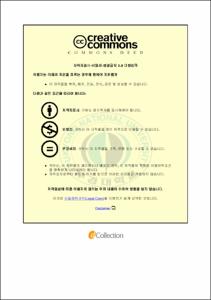분쇄패각을 혼입한 콘크리트 벽돌의 물리적 특성
- Abstract
- Numerous kinds of shellfishes are being farmed in the southern coast and west coast of Korea. Over 90% of oysters, one of the most representative shellfishes, are being farmed in Tongyeong, Gyeongnam and Goseong, Geoje. However, in case of most shells produced in Korea, the actual amount of processed shells is very little compared to the amount of collected shells. Since the rest of them are not properly treated, a lot of waste is being generated.
Therefore, this study suggests an alternative technology of treating a large amount of shells which cause significant environmental issues such as odor and disfiguration in the southeastern areas of Korea. In this study, the applicability of shells as a construction material was evaluated by manufacturing cement mortar mixed with shells (Oysters, Cockles and Clams) and concrete bricks to investigate their basic physical properties.
The study results are as below.
1) When shells were used for cement mortar, the substitution ratio of shells grew in general which caused an increase in the absorption ratio and a decrease in compression strength. Exceptionally, in case of mortar mixed with cockle shells, its compression strength increased as the substitution ratio rose. An increase in the absorption ratio and a decrease in compression strength due to a rise in the substitution ratio of shells resulted from porosity of shells. The strength of mortar mixed with cockle shells increased because a strong interfacial bond between particles of shells and cement.
2) A decrease in strength and an increase in the absorption ratio of cement mortar mixed with oyster shells resulted from porosity of oysters.
3) In case of concrete bricks made with a pressurized vibration method, its compression strength and absorption ratio were close to the second-grade brick criteria (8MPa, 13%), when mixed with 100% of clams and 50% of oysters. The compression strength and absorption ratio of concrete bricks mixed with 100% of oysters were found to be 2.18MPa and 21%, respectively, which are far below the quality standards.
4) It was found that concrete bricks mixed with shells containing salt may cause efflorescence and concrete bricks mixed with oysters have a high generation rate of efflorescence. Therefore, additional measures are required when shells are mixed in exterior concrete whose appearance is significant.
- Issued Date
- 2015
- Awarded Date
- 2015. 2
- Type
- Dissertation
- Publisher
- 부경대학교
- Affiliation
- 부경대학교,(주)금호건설
- Department
- 산업대학원 건축공학과
- Advisor
- 이재용
- Table Of Contents
- Abstract
Ⅰ. 서 론 1
1.1 연구의 배경 및 목적 1
1.2 연구의 방법 및 범위 2
1.3 기존 연구의 고찰 3
Ⅱ. 패각처리의 현황과 문제점 고찰 5
2.1 국내 패각의 발생량과 처리현황 5
2.2 패각의 재활용과 처리과정의 문제점 7
Ⅲ. 패각을 혼입한 시멘트 모르터의 물리적 성능 11
3.1 실험계획 및 방법 11
3.2 패각류의 물리․화학적 특성 14
3.2.1 비중 및 흡수율 14
3.2.2 화학적 성분 15
3.2.3 결정구조 16
3.2.4 미세구조 18
3.3 패각을 혼입한 시멘트 모르터의 물성 20
3.3.1 흡수율 20
3.3.2 압축강도 23
3.4 계면결합 형태 26
3.5 소 결 29
Ⅳ. 패각을 혼입한 콘크리트 벽돌의 물리적 성능 31
4.1 실험계획 및 방법 31
4.2 압축강도와 기건비중 34
4.3 흡수율 36
4.4 백화현상 38
4.5 소 결 42
Ⅴ. 결 론 44
참고문헌 45
감사의 글
- Degree
- Master
- Files in This Item:
-
-
Download
 분쇄패각을 혼입한 콘크리트 벽돌의 물리적 특성.pdf
기타 데이터 / 13.52 MB / Adobe PDF
분쇄패각을 혼입한 콘크리트 벽돌의 물리적 특성.pdf
기타 데이터 / 13.52 MB / Adobe PDF
-
Items in Repository are protected by copyright, with all rights reserved, unless otherwise indicated.